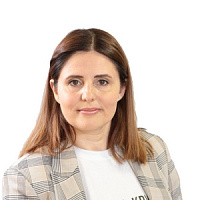ML project: Segmentation 2.0
- Customer
- Rosgosstrakh
- Project manager on the customer side
- IT Provider
- Cinimex company
- Year of project completion
- 2022
- Project timeline
- August, 2020 - November, 2022
- Project scope
- 16000 man-hours
- Goals
-
In a highly competitive insurance business environment, it is necessary to constantly maintain a high customer focus and optimize loss ratio parameters. To do this, companies need to constantly develop and improve tools that solve the problem of loss forecasting. These tools can be enhanced with geo-segmentation-based machine learning models, as well as contract valuation and agent, broker, and partner portfolio monitoring. Together, these tools allow you to take the KYC approach to the next level.
Based on a large amount of data generated by business, it is possible to build modern forecasting models using machine learning methods. This approach allows Rosgosstrakh to maintain a leading position in the insurance market, and with the help of machine learning to achieve its goals - by finding new insiders when working with data.
The uniqueness of the project
In the process of segmentation, both by numerical initial data (many sources), and by linking to the geolocation of each client (geosegmentation) in the Russian Federation. Based on this, it is possible to personalize the needs of each client and provide an optimal set of products in terms of risk and cost. The approach increases customer loyalty to the insurance company, which assesses risks as efficiently as possible. For each of the subtasks, different machine learning models are responsible, which work effectively not only autonomously, but also in conjunction.
The model assesses the risk with reference to the territory, after analyzing many factors of influence, geocoordinates are taken into account up to the house and infrastructure nearby. The model can show territory for potential sales growth. The project allows you to move from forecasting at the level of "regions" to the level of "streets". The model covers the entire territory of the Russian Federation and works with an SLA of less than 100ms, which makes it possible to use a highly loaded system as a strategic decision-making tool.- Used software
-
-
For the task related to geosegmentation, the Loc2Vec approach was used using PostGIS, Open Street Map, Mapnik.
-
To visualize the map with risk areas, we developed our own tile server that can work with highly loaded DBs.
-
To work with the service for identifying high-risk clients, tools such as Graph-tool, Numba, PyMotif were used.
-
To monitor and evaluate the portfolios of agents, brokers and partners, dashboards were implemented in Qlik on the Postgres database, where the results of the evaluation of all agents, brokers and partners by the model were displayed.
-
- Difficulty of implementation
-
The solution was developed from scratch, which was due to the fact that no boxed solution or a set of such solutions could satisfy the goals that were set by the business. This was especially noticeable in terms of working with data. Strong noisiness and a large number of heterogeneous sources required high costs for preprocessing and primary processing. Also, rather strict conditions for the SLA of the program operation made the task extremely non-trivial due to the high load of the service. This requirement was also met, allowing the model to process queries from Oracle DB in less than 100ms. In addition to the requirement for SLA, we also faced the following problem: the existing open source tile server for visualizing the operation of the model could not cope with such a volume of data, which is why we had to implement our own tile server.
A large number of hypotheses that required long and thorough testing, as well as the need for detailed additional configuration of open source libraries, contributed to the complexity of the development process of this project.
- Project Description
-
Rosgosstrakh, together with Cinimex, has implemented a comprehensive project to develop new services for risk assessment, forecasting large losses, and monitoring the portfolios of agents, brokers, and partners.
The results of the project are:
-
Geographic segmentation of the customer base. The task involved moving from regional risk analysis to street level risk analysis. This service is integrated into the general tariff module of Rosgosstrakh and is now used to calculate quotes for each vehicle insurance contract.
-
A service for assessing the client's riskiness using machine learning algorithms. Determining the riskiness of the client based on information about his environment at the stage of concluding an agreement. This service is also used in conjunction with the business scoring system.
-
ML service followed by BI visualization in Qlik for monitoring and evaluating portfolios of agents, brokers and partners cooperating with the company.
-
- Project geography
- Russia

